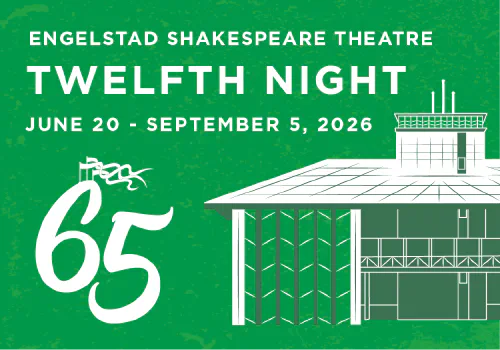By Marlo M. Ihler
When author Frances Hodgson Burnett, began her writing career in 1868 at the age of nineteen, her family life was most definitely in need of some help and healing. Her family had recently moved from England to a small town in Tennessee, both her parents had died, and she was carrying the burden of financially supporting her four siblings. So it is no surprise that elements of renewal and personal growth appear in many of her works. In her celebrated story, The Secret Garden, these themes are the driving force behind a young girl’s coming of age and the healing that follows her discovery of a hidden garden.
Adaptations of the Story
As the creative minds behind the musical version of the story, Marsha Norman (book and lyrics) and Lucy Simon (music) had Burnett’s rich and rewarding material with which to work. They created an immensely successful Broadway production, garnering numerous accolades including seven Tony Award nominations, two Tony Awards, and a Drama Desk Award for outstanding music, all in 1991. In fact, Daisy Eagan, who at age eleven played the lead role of Mary and won the Tony Award for Best Featured Actress in a Musical, is still the youngest person ever to win a Tony.
The story ofThe Secret Garden is so popular that it has been adapted numerous times for screen and stage. Some of the most well known are a 1949 black-and-white MGM film starring Margaret O’Brien, a 1975 television series, a 1987 Hallmark Hall of Fame television movie, and the most acclaimed, the 1993 film directed by Agnieszka Holland, starring Kate Maberly as Mary (www.imdb.com). Other adaptations include movie and television sequels, Japanese anime, novels based on the source material, a ballet, and an opera (to be presented by the Northwest Children’s Opera in June 2009).
The Healing Place
When discussing the story of The Secret Garden, one cannot help but be aware of the themes of healing and personal change. It is interesting to note that the author Frances Hodgson Burnett was an avid practitioner of Christian Science, New Thought, and Theosophy. These movements, which were at peak popularity at the turn of the twentieth century, profess belief in the power and necessity of positive thinking, law of attraction, the healing powers of the mind, and divinity in nature.
These tenets heavily influenced The Secret Garden. Burnett used the garden as the central symbol, a place of personal devastation (as with Lily Craven’s death and Archibald’s mourning) and subsequent restoration (as with Mary’s self-discovery). It is evident that Burnett intended to tell a story where one of the strongest sources of healing power comes from within the individual. As New Thought philosophy professes: a person can change their life by changing their thinking, and that thought and attitude affect one’s experiences (www.newthought.org/new_thought.html).
For Your Musical Consideration
In the musical version, it begins with a mood of secrets, solitude, and sadness. While growing up in India, Mary’s parents die from a cholera epidemic and she is sent to live with her uncle, Archibald Craven, at Misselthwaite Manor in England. It is not until we meet Martha, Mary’s maidservant, that the story begins its pivotal curative shift. A character filled with kindness and hope, she introduces creativity, imagination, and play to Mary’s dark and lonely world in the song “If I Had a Fine White Horse.” It is Martha who first mentions the forbidden garden and encourages Mary to explore the out-of-doors.
The minor character of Ben Weatherstaff, the head gardener at Misselthwaite Manor, is important in providing exposition to the story. He relates the history of the garden that once belonged to Lily, Archibald’s deceased wife, and the reasons why it was locked. Even as he warns Mary to “stay away from Miss Lily’s garden,” he seems to counter his own admonition in “It’s a Maze.” He talks of learning and persevering through making choices, or getting through the maze, almost a commentary on Mary’s personal journey throughout the play.
Mary’s transformation continues to take place as she befriends others, especially Martha’s brother Dickon. He becomes her gateway to the natural world, as he has special talents with the local flora and fauna. He represents the healing powers inherent in living things, expressly welcoming the warm spring in “Winter’s on the Wing” and “Wick.” Through their budding friendship he becomes an agent of change for Mary, helping her to thaw and grow, like the earth around them. She then in turn affects others for the better.
One such example is the character of Colin who is sickly and has been hidden away from the world’s view until Mary accidently discovers him one night. He, like the garden, has essentially been uncared for except for the basics of food, water, and medicine. His existence is severely lacking in love, affection, and any kind of creative outlet. Once Mary enters his life, she tends to Colin like she does the garden, applying everything she learns, hoping to transform him into a happy, healthy, and curious child.
The most difficult character to gauge is Archibald Craven, Colin’s father and Mary’s uncle. His healing has been excruciatingly slow, as he continues to mourn his wife’s death after ten years, as in “Lily’s Eyes” and “Where in the World.” He refuses to let in any reminders or remembrances and his only solace is escape through travel. He, perhaps out of all the characters, needs the deepest emotional healing.
Other Major Themes
Other major themes relating to healing are the components of human companionship, friendship, determination, and love. “The human heart is . . . a powerful force in this story,” says Jim Christian, director for this summer’s Festival production of The Secret Garden. “It has the capacity to cause the most exquisite pain, a miraculous ability to heal, and the precious gift of feeling love” (Director’s Notes, Nov. 2008).
Within this “pastoral fiction,” there is a deep contrast between the social standings of the characters. Suffering, secrecy, and sickness seem to be tied with those in the upper class. Those that represent and affect positive change are the country folk who are “more truthful, compassionate, and noble than people not in close touch with nature” (www.bookrags.com/studyguide-secret-garden/style.html).
Perhaps the greatest lesson of The Secret Garden is taught by Dickon: “The strongest roses will fair thrive on bein’ neglected, if the soil is rich enough” (2.4). Given the chance, even those in the most dismal of situations can grow and flourish. It is then no wonder that this tale of redemption and healing has such wide appeal. While The Secret Garden is “best known as a piece of children’s literature,” says director Jim Christian, “it offers deeply powerful themes and principles that are at the very heart of the human condition.”










